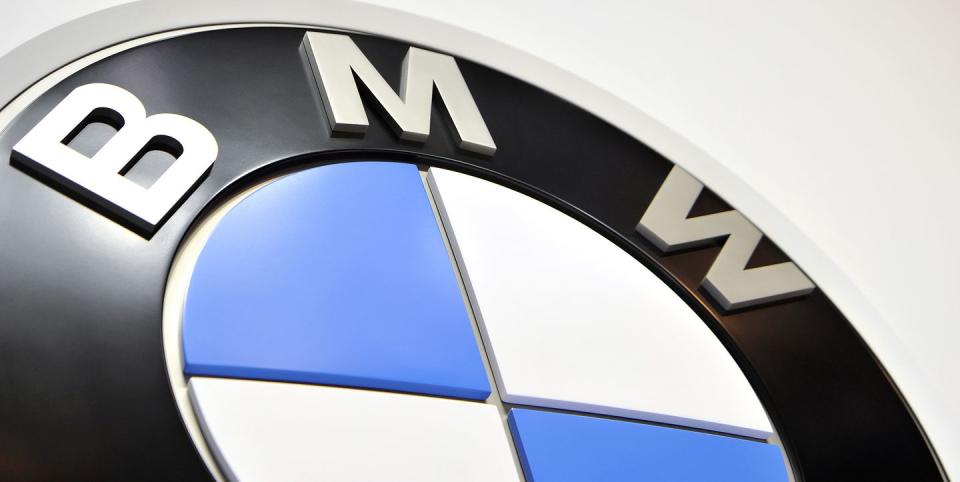BMW’s Modular Architecture: Just Two Platforms Will Cover All Models

The current dispute over tariffs is proof of just how hard automakers find it to plan around the whims of politicians. It’s the same story with electrification: Manufacturers are putting huge resources into developing electric vehicles and plug-in hybrids, but they don’t know how many they are likely to sell in different markets with frequently conflicting regulatory requirements that also are subject to change.
Among Europe’s big players, some, such as Jaguar Land Rover and the Volkswagen Group, are developing new EV-specific architectures and are planning to build electric models separately from their conventionally powered products. But BMW is taking a far simpler approach.
There will be two closely related versions of its forthcoming Fifth Generation architecture, and these will underpin every car it produces, regardless of whether it runs on electricity, uses a conventional engine, or is powered by a combination of the two. The only significant split will be between those cars that are natively front-wheel drive (the FAAR platform) and those that are rear-wheel drive (CLAR, in BMW-speak-a development of the platform that underpins the current 5-series, among others). The division will be further blurred by the fact that both architectures will support all-wheel-drive variants.
It’s a strategy that, the company admits, has been born from uncertainty about the rate at which buyers around the world are likely to embrace e-mobility. BMW predicts that China is set to move quickly to EVs and will mostly sidestep the intermediate step of plug-in hybrids. Other parts of the globe, including the United States, are likely to take things at a far slower pace. But nobody can be quite sure, and that’s why flexibility is key to the new Fifth Generation architecture.
“We assume that, by the year 2025, something between 15 and 25 percent of the cars we make will have electric drivetrains,” Oliver Zipse, BMW’s board member for production, told Car and Driver. “But it could be 40 percent, or it could be only 10 percent.”
Given that the BMW Group sold just under 2.5 million cars last year, that’s a huge potential difference and one that has encouraged BMW to merge the production of its next-generation models. The current plan is that every mainstream BMW model will be able to support both EV and PHEV variants as well as conventional engines, and that there will also be sufficient capacity to make specific electric-only models such as the upcoming iNext. BMW has said that it will offer 13 PHEVs and 12 EVs by 2025, most based on the new Fifth Generation architecture.
Zipse said BMW plans for the anticipated volume of future models three to four years before they are put on sale, meaning that splitting production among different architectures would “inevitably lead to either underutilization or overutilization, and in extremes [would] mean that we cannot fulfill market demands.”
The new platform has been inspired in part by the company’s experience in simplifying its engine lineup. All of BMW’s three-, four-, and six-cylinder engines are closely related and share numerous components. The electric powertrains similarly will use modular components to deliver different performance levels, with the company’s new ultracompact motor units having outputs ranging from 134 to more than 400 horsepower. Pure-electric models will use one of these or have a pair powering each axle; PHEVs will blend their efforts by using an e-motor unit on one axle and having a conventional engine power the other.
All vehicles on the Fifth Generation platform will have space for an underfloor battery pack. The packs will be flat but with scalable sizes based around a variety of different cells: high-performance ones for faster cars, taller ones for SUVs. Stefan Juraschek, BMW’s head of electric drivetrain development, confirmed that different-capacity batteries will be offered in the same model. The differences between them will be reflected by badging that is likely to reflect the way the company distinguishes among conventional engines. So buyers will be able to have an entry-level 30e system or a brawnier 40e or 50e with more range, more power, and likely also more driven wheels. BMW said the new electric architecture will offer up to 62 miles of range for PHEVs and up to 435 miles in EVs.
The advantage of using the building-block approach, which the senior engineers were happy to liken to a well-known Danish brand of construction toys, is that BMW will be able to produce cars with radically different powertrains alongside each other. But it also means some compromises. For instance, the company’s conventionally powered cars-which are still anticipated to be the majority of vehicles in 2025, even on the brand’s most electro-optimistic projects-will be designed to accommodate an underfloor battery pack that many of them won’t have. That means we can expect some increase in height, even on the brand’s non-SUVs. All cars built on the Fifth Generation architecture will require a bulkhead between their engine compartment and passenger cabin, so even the EVs will be sticking to the basic three-box design that this dictates.
Yet when you don’t know the future, such a flexible strategy looks smart.
You Might Also Like

 Yahoo Autos
Yahoo Autos 